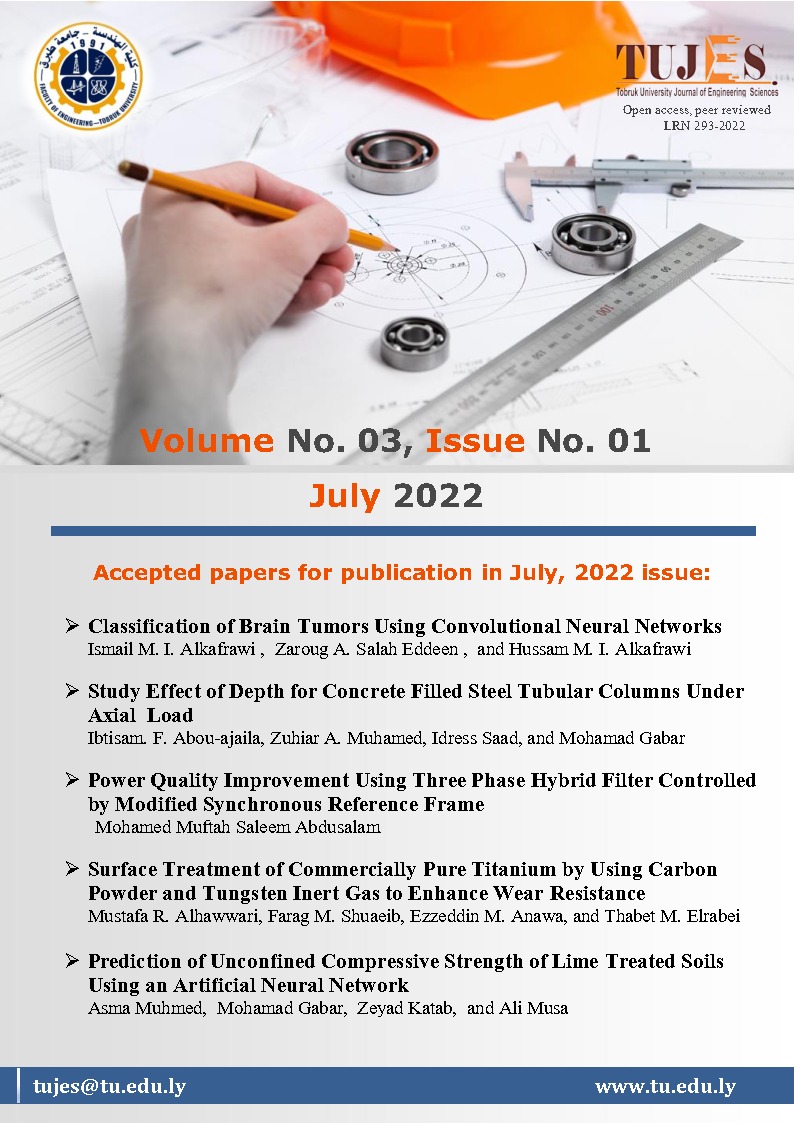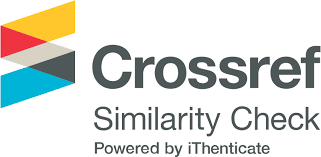Power Quality Improvement Using Three Phase Hybrid Filter Controlled by Modified Synchronous Reference Frame
DOI:
https://doi.org/10.64516/7z90as03Keywords:
Modified Reference Frame, Shunt Hybrid Filter, Unit Vector GenerationAbstract
The power system consists of large range of electrical, electronic and power electronic equipment in industrial and commercial applications. The power electronics equipment generates harmonic currents that are the source of adverse effects such as heating in transformers, perturbation of sensitive control equipment and resonances with grid. These problems can deteriorate the power quality in power networks. Therefore, it is very important to compensate the dominant harmonics and thus Total Harmonic Distortion (THD) below 5% as specified in IEEE 519 harmonic standard. Many solutions used to reduce this type of problems such as active filter, passive filter and hybrid filter, at the same time the performance of filters and harmonics elimination can be optimized by control strategy and filters topologies. This paper focuses on the control of shunt hybrid power filter by modified synchronous reference frame method (SRF). It focuses on the use of Self-Tuning-Filter (STF) with unit vector generation instead of Phase-Locked-Loop (PLL) circuit. The studied hybrid active filter consists of an active filter and three phase LC filters tuned for 7th harmonic frequency. The nonlinear load is a diode rectifier feeding a (R, C) parallel load. The use of STF's simplifies the control scheme by reducing the number of extraction filters. The use of STFs instead of classical extraction filters allows extracting directly the voltage and current fundamental components. The effectiveness of this study verified by computer simulation using MATLAB Simulnk with the power system toolbox under steady-state condition.
References
1. R. SAHU, D. MAHAPATRA “Comparative study between active and hybrid power filters for power quality enhancement,” M.S. thesis, Dept. Electrical. Eng., Rourkela institute, India, (2013).
2. A. SANDEEP “Study of hybrid active power filter for power quality improvement,” M.S. thesis, Dept. Electrical. Eng., Rourkela institute, India, (2014).
3. J. C. Das: Passive filters- Potentialities and limitations, IEEE-Transactions on industry applications, vol. 40, pp. 345-362 (2004).
4. M. C. Benhabib,’’ Contribution à l’étude des différentes topologies et commandes des filters actifs parallèles à structure tension, Modélisation, simulation et validation expérimentale de la commande’’ PHD Thesis, University Henri Poincaré, Nancy-France, (2004).
5. D. Djendaoui, A. Benaissa, B. Rabhi, L. Zellouma “Self tuning filter for three levels four legs shunt active power filter with fuzzy logic controller,” Acta polytechnic 61(3):415-427 (2021).
6. M. Abdusalam, P. Poure, S. Saadate, “A new control scheme of hybrid active filter using Self-Tuning-Filter,” POWERENG, international conference on power engineering, energy and electrical drives, Setubal Portugal, pp. 12-14, April. (2007).
7. M. Abdusalam: “Harmonics Currents Cancelation by Three-Phase 4-wire Hybrid Active Filter with Split Capacitors and STF,” IOSR Journal of Electrical and Electronics Engineering, vol. 13, pp. 01-06 (Nov-Dec. 2018).
8. Hoon, Y, Radzi M.A.M, Hassan M.K, Mailah N.F, “DC-Link Capacitor Voltage Regulation for Three-Phase Three-Level Inverter-Based Shunt Active Power Filter with Inverted Error Deviation Control,”. Energies, 9, 533. (2016)
9. Jacob A., Abraham B.T, Prakash N, Philip R. “A Review of Active Power Filters in Power System Applications,” Int. J. Adv. Res. Electr. Electron. Instrum. Eng, 3, 10253–10261. (2014)
10. Philip, R. “Synchronous Reference Frame Detection and Hysteresis Control for Active Power Filters,” Int. J. Adv. Res. Electr. Electron. Instrum. Eng. 3, 12173–12178. (2014).
11. Kumar, P.A.; Patel, R. “Adaptive hysteresis and fuzzy logic controlled based shunt active power filter resistant to shoot-through phenomenon,” IET Power Electron. 8, 1963–1977. (2015).
12. Kathalingam, S, Karantharaj P. “Comparison of Multiple Carrier Disposition PWM Techniques Applied for Multi-Level Shunt Active Filter,” J. Electr. Eng. 63, 261–265. (2012).
13. Li, H.; Zhuo, F.; Wang, Z.; Lei, W.; Wu, L. “A novel time-domain current-detection algorithm for shunt active power filters,”. IEEE Trans. Power Syst. 20, 644–651.(2005).
14. Suleiman M, Mohd M. R, Hashim. H, Noor A W, Yap H, Muhammad M Z “Modified synchronous reference frame based shunt active power filter with fuzzy logic control pulse width modulation inverter,’’ Energies Journal, 10,758,doi:10.3390/en10060758, (2017).
15. M. C. Benhabib, E. Jacquot, S. Saadate,“An Advanced control approach for a shunt active power filter ” Groupe de Recherche en Electrotechnique et Electronique de Nancy, CNRS UMR 7037, France. International Conference on Renewable Energy and Power Quality, Vigo, Spain, (2003).
16. Gayathri, Y. Reddy, K.H.; Anupama, S. “Simulation of SRF Control Based Shunt Active Power Filter and Application to BLDC Drive,” Int. J. Comput. Sci. Inf. Secur. 12, 6–12. (2014).
17. Boukadoum, A.; Bahi, T. “Fuzzy Logic Controlled Shunt Active Power Filter for Harmonic Compensation and Power Quality Improvement,” J. Eng. Sci. Technol. Rev. 7, 19–24. (2015).
18. H. Akagi, S. Srianthumrong and Y. Tamai, “Comparison in circuit configuration and filtering performance between hybrid and pure shunt active filters,’’ IEEE / IAS Annual Meeting, vol 2, pp. 1195-1202, (2003).
19. [19] S. Srianthumrong, and H. Akagi, “A Medium- voltage transformerless ac/dc power conversion system consisting of a diode rectifier and a shunt hybrid filter,’’ IEEE Trans. Ind. Appl., vol 39, no. 3, pp. 874-882, (2003).
Downloads
Published
Issue
Section
License
Copyright (c) 2022 Mohamed Muftah Saleem Abdusalam (Author)

This work is licensed under a Creative Commons Attribution 4.0 International License.













